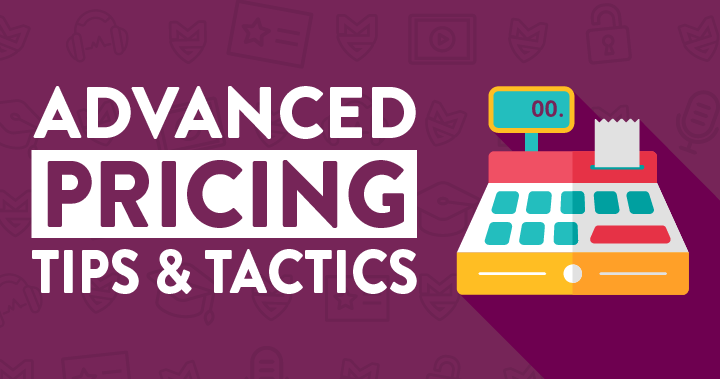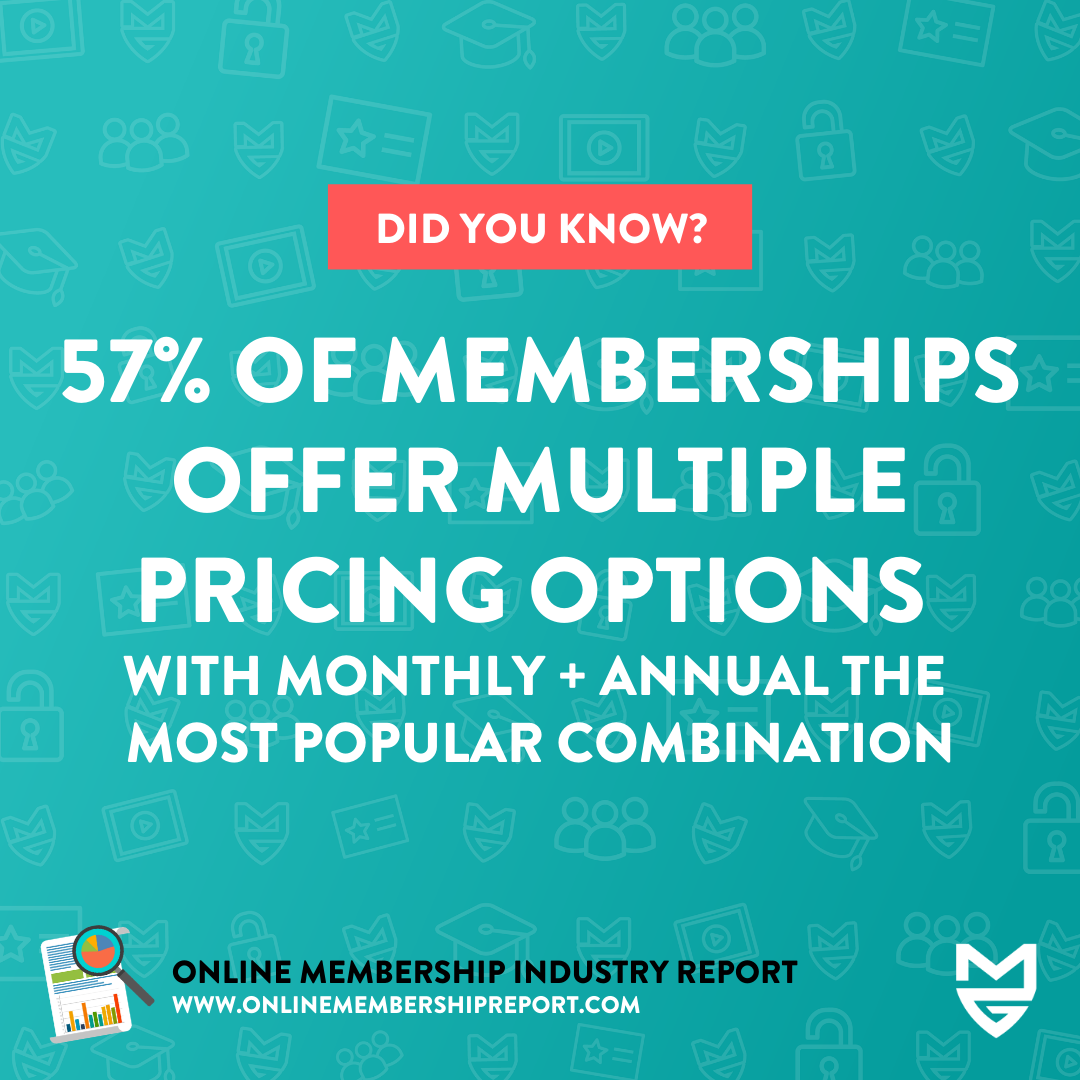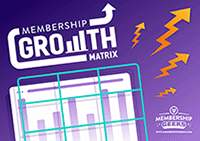Membership pricing is trickier than it seems.
It's hard enough just getting the price of your monthly subscription right; but what about more complicated pricing scenarios?
Promotions, discounts, multiple membership tiers – before you know it, you're banging your head on your desk, desperately trying to figure out what your pricing strategy should be.
Never fear! Here are my top tips and tactics to help you with advanced membership pricing:
The difference between B2C vs B2B pricing
You need to consider your membership pricing strategy differently depending on whether you have a B2C or B2B audience.
Both audiences will perceive the price of the memberships they decide to join very differently, which is why you need to be aware of the distinctions.
A B2C member will view the price as a cost, while B2B members see memberships as an investment.
You must take this into consideration. B2C memberships are usually priced lower than B2B memberships.
The average cost of a B2C membership tends to be between the $10 to $35 mark.
B2B memberships are more costly and are priced anywhere from $30 to $70 per month.
Keep in mind that these figures are just ballpark numbers for the typical type of online memberships – so that doesn't include higher level programs such as masterminds or small group coaching membership, which usually cost a lot more.
If there is a financial barrier to entry to your membership and members need to buy equipment before joining, it shows that they understand the value of the membership and their willingness to spend money on their passion or end goal.
Consider the specific numbers you use
As if pinpointing the right price wasn’t hard enough, it pays to be picky about the actual numbers you put in your pricing.
Some people swear by the that ending your price with a seven is the secret to unlocking untold riches.
Others think you should end with a 4… or maybe it's a 2… or a 3…

Dammit, I almost nailed that magic formula!
Truth is, it's actually the leading number of your price that tends to matter the most.
People will subconsciously consider the difference between $29 and $30 to be far greater than it actually is.
Sure, it’s just a dollar price difference but those leading numbers really do matter.
Knowing this, if you’re charging $32 per month, you could just charge $39 and it won’t make a huge difference to the buyers’ perception of the price because the leading number remains the same.
This is a good way to think about your discounts too.
You can make discounts more appetizing to potential members by changing the leading number.
People will be more impressed with a discount that went from $34 to $29 than a discount that dropped from $39 to $35.
The moral of the story here is to stop obsessing over the trailing number and whether your price should end with a seven or a nine.
It really doesn’t matter. The first number is what counts the most.
Try this easy discounting hack!
Speaking of discounts and special offers, here’s a juicy hack for you…
Make sure that you use the highest number out of the value of the saving and the percentage of the saving.
Let me explain…
Say you're offering 20% off the price of your annual membership, which is $500 a year.
That would be a saving of $100 – and you should market the promotion as a $100 discount.
People pay less attention to the symbols than the numbers.
Since 100 is the bigger number, it appears to be the better deal.
Conversely, if your annual membership is priced at $50 and you offer 20% off, the saving is only $10; so marketing it as 20% off will seem a larger discount (20 > 10) and as such be more appealing.
Monthly vs Annual
A lot of membership owners struggle to decide whether they should bill monthly or annually.
We say – why not both?
I suggest giving your members both options because people like to have the choice.
And when it comes to deciding how much to charge – set your annual price at 10 times your monthly cost as opposed to 12 times.
This creates an added incentive for someone to make that longer term commitment, as it represents better value in the long run.
All while maintaining the option for someone who perhaps can't afford the larger financial outlay or who prefers less commitment to choose the monthly option.
Price Anchoring
Offering multiple joining options and price points is a simple way leverage something called price anchoring.
The main idea behind price anchoring is that customers perceive pricing relatively.
And so having multiple options – whether it's something simple like offering monthly vs annual billing cycles; or more significant like having multiple membership tiers – can add greater context to the buying decision and influence people towards options they might not have considered if they were the only ones offered.
You can use price anchoring in other more advanced ways too.
If you have 10 courses in your membership, you can give people the option to purchase the courses individually for $100 each, or pay $50 a month for full access to all 10 courses.
You’re giving people value for their money and the choice really is a no brainer.
This is something we call the “Splinter Strategy“.
Decoy Products
Another way to use price anchoring is to use a decoy product.
A decoy product’s sole purpose for existing is to make your main option (or your preferred option) look so much better.
When compared with the decoy product, the main option becomes the easy choice.
There's an old adage in marketing: the best way to sell a $2000 watch, is to put it next to a $10,000 watch
On its own, someone may consider the $2,000 watch to be way too expensive; but when next to a $10,000 option, suddenly it seems like the more affordable choice, because you're viewing things through a different lens.
Chances are, you have no intention of selling many (or any) units of the $10,000 option – it's a “decoy” to steer people towards the $2,000 product.
You can apply this to your membership.
Perhaps you're struggling to get people to join your $80 a month membership.
You could introduce a premium tier at $800 per month, which included everything from your regular tier with the addition of a monthly private coaching call.
This provides a completely different frame of reference which re-contextualises the value for money associated with your $80 a month option.
Make use of comparative pricing
Comparative pricing is a form of price anchoring where you compare the cost of your membership to other everyday purchases.
A famous example that a lot of companies use is saying something like:
“For the cost of just one cup of coffee per week, you can join our membership and achieve x, y, and z.”

By giving people context and comparing the price of your membership to low cost and relatable things like a cup of coffee, really helps to give people a renewed perspective.
They see how much value they could be getting from your membership if they were to join.
Comparative pricing is a unique way to ignite a different type of decision-making process.
It lets people contextualize their investment in your membership by comparing the price to other things they buy often.
It helps to convince them that the cost isn’t too much or outlandish.
Reducing friction and decision fatigue
Although it’s good to give people options such as annual and monthly billing, you mustn’t overdo it.
Adding too many membership tiers and pricing options can be confusing and add friction to the buying process.
Plus, it can lead to decision fatigue, which is something you want to avoid.
Any more than three joining options on your sales page is too much.
Consider refining your options a little more to make it easier for members to join with the least amount of friction possible.
When there are too many choices, people are more likely to experience decision fatigue.
This is called the Paradox of Choice, which usually results in people just choosing to give up and forget about your membership for a while because there were just too many choices.
Bonus tip!
My final tip for you has to do with the name that appears on your members’ bank accounts when they are billed for your membership.
If your business name is different from the name of your online brand, members may not recognize the name that appears in their bank account.
This could cause a lot of confusion and some people might even think that they have been charged incorrectly or that it’s a fraudulent charge.
A way to combat this is by setting a unique price, something like $23.17 for instance.
This helps because members will see it in their account and are more likely to recognize it because it doesn’t blend in with their other purchases.
(Hat tip to our friends Rob & Kennedy at ResponseSuite for that one)
Finding the right pricing strategy that works for your membership may take some time.
And often a bit of experimentation.
I hope that these advanced membership pricing strategy tips and tactics help you to identify ways to price your membership right so that you can continue to grow and attract new members.






